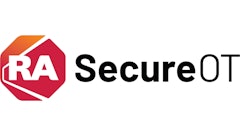
Volatile tariff policies are creating new criminal opportunities across global supply chains. The same invoice manipulation and transshipment schemes criminals use to launder money now also help them evade customs duties. Procurement and compliance teams often lack the coordination necessary to share red flags and cross-validate supplier information, the net result being that criminals exploit these information gaps. Companies that fail to bridge this divide will be exploited by criminal networks.
The price on the invoice doesn't match reality. The shipping route makes no economic sense. The supplier was incorporated last month but claims decades of experience.
These red flags surface daily across procurement desks, yet most go unnoticed. Why? Because procurement teams focus on operational concerns like quality and delivery while lacking training to recognize the financial crime patterns hidden within routine transactions. This disconnect has created a massive blind spot that criminal organizations exploit with increasing frequency.
Trade-based money laundering is widely recognized as a significant channel for illicit financial flows, with some estimates suggesting it may account for up to 80% of such activity globally, though precise figures remain debated and are not universally accepted. Yet while various estimates put trade-based money laundering (TBML) activity in the hundreds of billions or even trillions of dollars annually, a comprehensive mapping of known court cases worldwide from 2011 to 2021 identified just $60 billion in money laundering. This massive gap between estimated activity and detected cases reveals the true scope of the problem: the vast majority of trade-based money laundering operates in the dark.
The tariff catalyst
Recent tariff escalations have intensified the economic pressures that drive financial crime across global supply chains. With tariffs escalating to as high as 145%, they now apply to $582.4 billion in annual trade volume between the United States and China alone, making duty evasion schemes extraordinarily profitable. When tariffs can impose costs of 100% or more, the economic pressure to circumvent regulations becomes overwhelming.
The math is simple. A 25% tariff on semiconductor components forces companies to either absorb crushing cost increases or find alternatives. Some respond legitimately by diversifying suppliers to Vietnam, India, or Mexico. Others turn to illegal schemes like transshipment and country-of-origin fraud.
To avoid these risks, companies need visibility into their entire supply chain. A U.S. importer buying from Japan may still face China's 34% tariff if their vendor uses Chinese components that weren't substantially transformed - meaning the product didn't emerge with a new name, character, or use.
This complexity creates perfect cover for illicit activity. The same economic pressure that drives legitimate supply chain diversification also drives illegal transshipment schemes. Chinese goods flow through Vietnam or Malaysia, acquire new labels, and enter the US market as if they originated from lower-tariff countries. The technique is straightforward: route goods through an intermediary country, perform minimal processing or repackaging, then claim the intermediate country as the origin.
The procurement blind spot
Understanding why trade-based money laundering thrives requires understanding how procurement teams evaluate suppliers. These teams focus on production capability, quality standards, and delivery timelines. They conduct factory audits, review certifications, and negotiate contracts. All of this due diligence validates the legitimacy of the business relationship.
Criminals exploit this focus. They create suppliers that pass every traditional procurement check while actively facilitating financial crimes. The factory exists and produces real goods. The quality meets specifications. The delivery schedule is reliable. But the pricing is manipulated, the ownership structure is opaque, and the payment instructions route through shell companies in multiple jurisdictions.
It is estimated that less than 5% of shipments globally undergo compliance intervention, allowing for trade-based money laundering to hide in plain sight. Even when shipments are inspected, customs authorities focus on prohibited goods, not suspicious pricing or payment structures.
This creates a statistical reality that criminals understand better than most compliance teams. With over 20 million containers entering the United States annually and customs inspecting around 5% of sea containers, combined with less than 5% of global shipments undergoing any compliance intervention, the detection risk is minimal. The potential financial gains from these illicit schemes are substantial.
The data advantage
Effective detection requires fusing multiple data streams that traditionally remain isolated. Procurement data reveals supplier relationships, pricing negotiations, and contract terms. Logistics data shows shipping routes, transit times, and cargo descriptions. Financial data captures payment patterns, beneficiary changes, and banking relationships.
The discrepancies between these data streams often expose the fraud. An invoice shows a price 400% above market rate. A bill of lading reveals a nonsensical shipping route. A payment instruction directs funds to an unrelated company in a high-risk jurisdiction. Each red flag might seem explainable in isolation, but together they reveal a pattern.
Advanced analytics can detect these patterns at scale. Machine learning models trained on historical trade data can identify pricing anomalies that would escape manual review. Natural language processing can automatically extract and compare data from thousands of trade documents. Network analysis can map complex relationships between shell companies and beneficial owners.
But technology alone isn't sufficient. The most sophisticated AI system will fail if it's analyzing incomplete data or if the humans reviewing its outputs lack the context to act on its findings. This is where procurement-compliance collaboration becomes essential.
The solution requires procurement and compliance teams to work together, share data, and have joint accountability. Supplier onboarding must integrate compliance risk assessment with procurement's commercial evaluation. This means compliance teams need access to commercial context - pricing negotiations, shipping routes, and operational details - to identify trade-based money laundering risks that basic sanctions screening might miss.
The path forward
Volatile tariff policies are creating new opportunities for criminal exploitation of supply chains. Companies that fail to bridge the procurement-compliance divide risk regulatory penalties, unwitting involvement in criminal schemes, and significant compliance violations.
The path forward requires executive sponsorship, shared metrics, and unified technology platforms. It requires training procurement teams to recognize financial crime red flags and educating compliance teams about normal pricing variations, standard shipping practices, and typical supplier behaviors. Most importantly, it requires abandoning the assumption that supply chain resilience and financial crime compliance are separate concerns.
The companies that thrive in this environment will be those that recognize this integration not as a compliance burden but as a competitive advantage. They will build supply chains that are simultaneously more transparent, more resilient, and more profitable. They will combine data from multiple sources and advanced analytics to see risks and opportunities that their competitors miss.
The alternative is to remain vulnerable to the same tactics that criminals have used successfully for years: exploiting organizational silos, manipulating trade documentation, and hiding illicit financial flows within legitimate commercial relationships. In an era where tariffs and geopolitical tensions are reshaping global trade, that vulnerability is no longer acceptable.





















